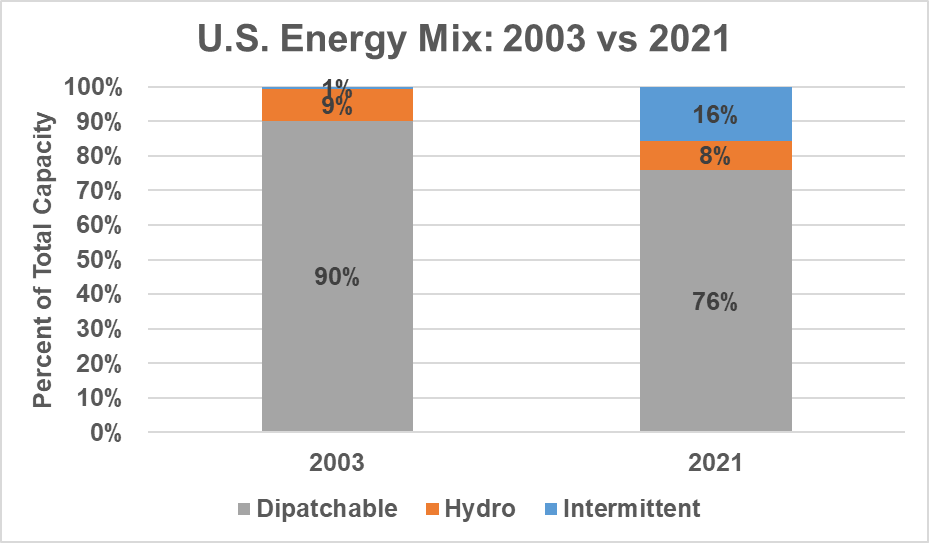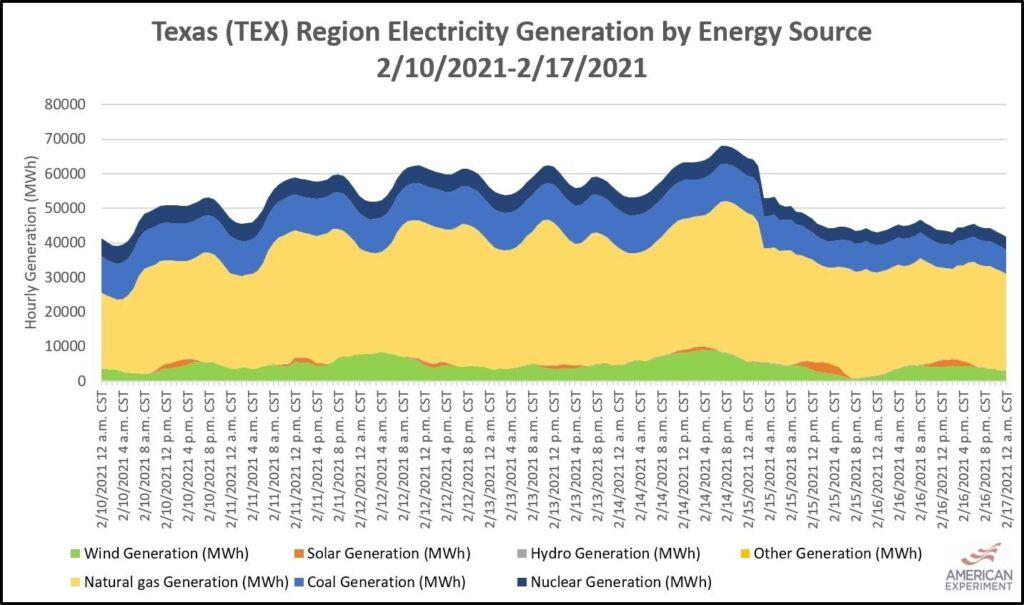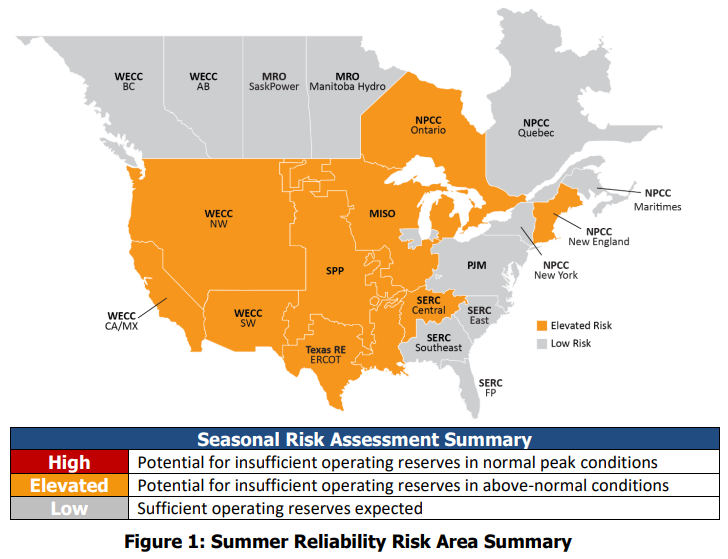The 2003 northeast blackout and how today’s blackout risks differ
At a time when reliability concerns are plaguing most regional power grids in America, it helps to remember one of the largest blackouts in the country’s history — the 2003 northeast blackout.
Twenty years ago on August 14, 2003, typical for hot and humid summer days, people turned to their air conditioning units to beat back the temperatures. This caused an increase in electricity demand, which is completely normal and something grid operators plan for.
What was unusual for this instance was how uncoordinated the grid planners were.
Eventually, a minor power outage at an overstrained power plant in a suburb of Ohio cascaded into a collapse the northeastern power grid, including much of Ontario.
According to a report from the U.S.-Canada Power System Outage Task Force assigned to identify the causes of the blackouts, “deficiencies in corporate policies, lack of adherence to industry policies, and inadequate management of reactive power and voltage caused the blackout, rather than the lack of reactive power.”
In other words, it wasn’t the capabilities of the grid that caused the collapse, but rather poor management on behalf of the system operators at the time. Specifically, the utility company FirstEnergy made numerous oversights that led to the eventual blackout.
This is the opposite problem plaguing the electrical grid today, as will be discussed below.
The 2003 northeast blackout was about poor management
The task-force report continued, saying:
[A]lthough the system was electrically secure, there was clear experience and evidence that the Cleveland-Akron area was highly vulnerable to voltage instability problems. While it was possible to operate the system securely despite those vulnerabilities, FirstEnergy was not doing so because the company had not conducted the long-term and operational planning studies needed to understand those vulnerabilities and their operational implications.
Long story short, a series of management errors led to the escalation of events that caused the blackouts.
FirstEnergy failed in a number of ways.
First, it didn’t notify system operators of planned closures of critical infrastructure needed to meet increased electricity demand. Second, it failed to trim vegetation around their infrastructure, which transmission lines came into contact with causing them to trip offline. Third, it didn’t appropriately monitor the electrical infrastructure system and take effective action to contain the initial outages.
In many cases, the utility company had no understanding of what was happening or what to do about it because they had no systems available to effectively monitor the problems.
Furthermore, the Midwest Independent System Operator (MISO) was experiencing errors in its monitoring systems that disabled their ability to understand what was happening.
The impact of the blackouts was immense.
The impact of the 2003 northeast blackouts
In the end, over 55 million people were affected by the blackouts. Some people went without power for a couple hours. Others suffered through a couple days.
In New York City, roughly 400,000 unlucky subway-goers were stranded underground until power was restored.
In many places, water pressure gave out and boiling water notices were put into effect. For example, according to the Water Quality and Health Council:
During the blackout of August 2003, water customers in Cleveland and Detroit were immediately placed under a three-day boil-water advisory. Detroit took the extra step of adding extra chlorine to its municipal water supply to combat the introduction of illness-causing bacteria. In addition, Macomb County officials ordered the area’s 2,300 restaurants to shut down until the water was confirmed as not contaminated. Local water departments did not lift the boil-water alert until two water sample tests came back negative for contamination within the course of a 24-hour period.
In addition, cell service was interrupted, travel by railway and airplane was halted, and traffic lights went offline.
Total societal costs at the time ranged from $6 to $10 billion. It was also estimated that roughly 90 people lost their lives due to the blackouts.
The conclusion of many in the industry was that coordination to ensure resiliency was much needed.
As a result, the governments of Canada and the United States, in addition to the North American Electric Reliability Council (NERC), updated their standards to improve resiliency. Utilities around the country also started to harden their grids to prevent similar events.
Our problems today have reversed
As the task-force noted, the system’s capabilities to handle the increasingly hot weather and the resulting strain on the grid were not at fault in 2003.
Failed management was to blame.
Fast-forward to today and we have the exact opposite problem.
America’s regional grids have come a long way in terms of cooperation and resiliency since the 2003 blackouts.
But we’ve also come a long way in terms of our energy mix, in ways that raise concerns regarding reliability.
In 2003, America’s capacity mix was 90 percent coal, gas, nuclear and other fuel-based resources. These are known as “dispatchable” resources because they can be dispatched on demand, regardless of the weather.
By 2021, this percentage had dropped to 76 percent, with weather-based resources making up 16 percent of total capacity.

Grid planners, therefore, are having to tackle another aspect of weather on top of having to meet increasing demand from extreme hot and cold temperatures and storms taking out transmission lines.
Now, they must also make sure (and pray) that the wind is blowing and sun is shining in order to meet the electricity needs of businesses and families.
Here’s a subheadline from Times Union that sums up the current situation:
There are now vast advances in resiliency and cooperation among power companies but unpredictable weather is a growing threat
Indeed, when you rely on increasingly large amounts of weather-based energy sources, uncooperative weather becomes a major threat.
The 2021 Texas blackout is an example
The 2021 Texas blackout is a perfect example of just how disastrous uncooperative weather can be on a grid heavily reliant on weather-based resources.
The blackout on the grid operated by Electric Reliability Council of Texas (ERCOT) resulted in anywhere from 150 to 700 deaths, depending on the estimates you’re reading.
Many theories have been published about the Texas power outages — some blaming the failure of wind and solar, others blaming the failure of natural gas and other thermal generators.
The truth is that all energy sources failed during the storm due to the extreme weather. The units that remained on the grid, keeping it from a total collapse and providing the means for regaining power, were primarily thermal based, as the graph below shows.

However, discussions about which plants failed and by what degree miss the point.
The blame for the blackouts should be placed on bad policies stemming from at least a decade earlier. These policies resulted in ERCOT being far too reliant on weather-based energy sources and created the conditions for future blackouts.
Bad policies favoring renewables caused the 2021 blackout
As Dr. Brent Bennett of the Texas Public Policy Foundation pointed out, based on ERCOT’s own forecasts, “it was inevitable that this weather event was going to cause demand to exceed supply, even if no wind or fossil fuel generators had failed due to the weather.”
ERCOT knew that a potential scenario of high demand and low wind and solar output could result in a situation where electricity demand exceeded supply — which meant that blackouts would occur.
Based on ERCOT’s best-case forecasts for the day of the blackouts, the grid would have resulted in “Level 3 emergency and rolling blackouts” at best.
Dr. Bennett noted that the 2021 blackout was a disaster in the making directly due to policies that resulted in the grid “relying entirely on wind and solar to meet our [Texas’s] demand growth since 2015 and now has less gas and coal generation in total than it did five years ago.“
Bennett continued, saying:
It is critical that policymakers understand that the primary causes of this tragedy were not technical or management errors but rather policy choices that favored unreliable wind and solar over reliable gas and coal generation. Poor real-time decisions made the problems worse, but it was these long-term policies that left the grid vulnerable to any event combining high demand with low wind and solar output and made this event almost inevitable.
The lesson
Poor energy policy resulting in a lack of available power was the culprit in the 2021 Texas blackout.
Almost every regional grid in the United States is ringing the alarm about similar issues, as the image below provided by North American Electric Reliability Corporation (NERC) shows.

These shortfall problems all stem from the same thing: poor energy policy favoring unreliable wind and solar energy sources, and economically forcing reliable power plants off the grid.
For parting words, I’ll leave you with the warnings from the North American Electric Reliability Corporation (NERC), that due to retirements of thermal plants and increased wind and solar penetrations, the reliability of the grid relies on cooperative weather.
On MISO:
Performance of wind generators during periods of high electricity demand is a key factor in determining whether system operators need to employ operating mitigations, such as maximum-generation declarations and energy emergencies.
And Southwest Power Pool (SPP):
[Balancing Authority] generation capacity deficiency risks remain depending on wind generation output levels and unanticipated generation outages in combination with high load periods.
And ERCOT:
Extreme generator outages combined with low-wind output during extreme
peak demand could result in the need to employ operating mitigations such as demand response, EEAs, and localized load shedding.
ERCOT is also experiencing large increases in renewable production curtailments due to
transmission constraints, and these curtailments are increasingly occurring at solar PV sites.